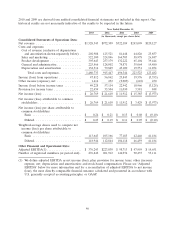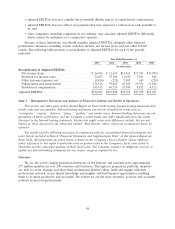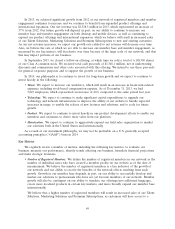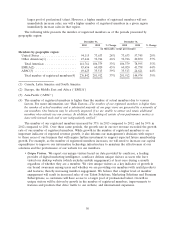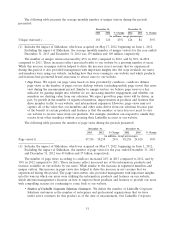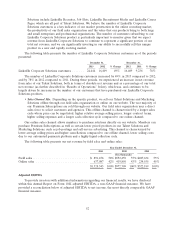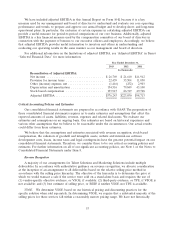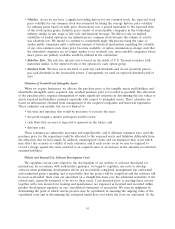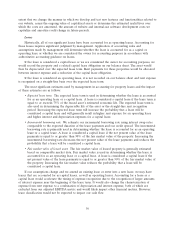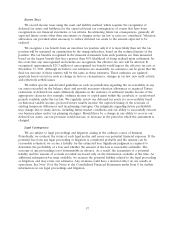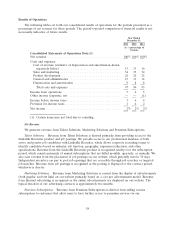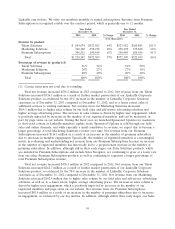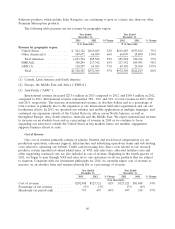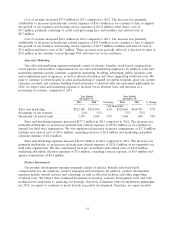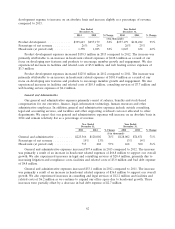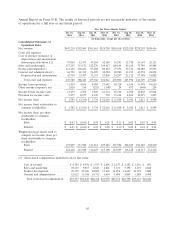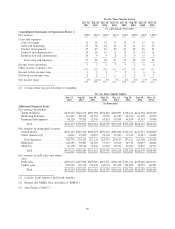LinkedIn 2013 Annual Report Download - page 58
Download and view the complete annual report
Please find page 58 of the 2013 LinkedIn annual report below. You can navigate through the pages in the report by either clicking on the pages listed below, or by using the keyword search tool below to find specific information within the annual report.extent that we change the manner in which we develop and test new features and functionalities related to
our website, assess the ongoing value of capitalized assets or determine the estimated useful lives over
which the costs are amortized, the amount of website and internal-use software development costs we
capitalize and amortize could change in future periods.
Leases
Historically, all of our significant leases have been accounted for as operating leases. Accounting for
these leases requires significant judgment by management. Application of accounting rules and
assumptions made by management will determine whether the lease is accounted for as a capital or
operating lease or whether we are considered the owner for accounting purposes in accordance with
authoritative accounting guidance on leases.
If the lease is considered a capital lease or we are considered the owner for accounting purposes, we
would record the property and a related capital lease obligation on our balance sheet. The asset would
then be depreciated over the expected lease term. Rent payments for these properties would be allocated
between interest expense and a reduction of the capital lease obligation.
If the lease is considered an operating lease, it is not recorded on our balance sheet and rent expense
is recognized on a straight-line basis over the expected lease term.
The most significant estimates used by management in accounting for property leases and the impact
of these estimates are as follows:
•Expected lease term. The expected lease term is used in determining whether the lease is accounted
for as an operating lease or a capital lease. A lease is considered a capital lease if the lease term is
equal to or exceeds 75% of the leased asset’s estimated economic life. The expected lease term is
also used in determining the depreciable life of the asset or the straight-line rent recognition
period. Increasing the expected lease term will increase the probability that a lease will be
considered a capital lease and will generally result in higher rent expense for an operating lease
and higher interest and depreciation expenses for a capital lease.
•Incremental borrowing rate. We estimate our incremental borrowing rate using interest swap rates
comparable to the expected duration of the lease payments and our credit spread. The incremental
borrowing rate is primarily used in determining whether the lease is accounted for as an operating
lease or a capital lease. A lease is considered a capital lease if the net present value of the lease
payments is equal to or greater than 90% of the fair market value of the property. Increasing the
incremental borrowing rate decreases the net present value of the lease payments and reduces the
probability that a lease will be considered a capital lease.
•Fair market value of leased asset. The fair market value of leased property is generally estimated
based on comparable market data. Fair market value is used in determining whether the lease is
accounted for as an operating lease or a capital lease. A lease is considered a capital lease if the
net present value of the lease payments is equal to or greater than 90% of the fair market value of
the property. Increasing the fair market value reduces the probability that a lease will be
considered a capital lease.
If our assumptions change and we amend an existing lease or enter into a new lease, we may have
leases that are accounted for as capital leases, as well as operating leases. Accounting for a lease as a
capital lease would accelerate the timing of expense recognition due to the recognition of larger amounts
of interest expense near the beginning of the lease term. It would also change the characterization of
expense from rent expense to a combination of depreciation and interest expense, both of which are
excluded from our adjusted EBITDA metric and would likely impact other financial metrics. However,
lease classification would not be expected to impact our cash flow.
56


